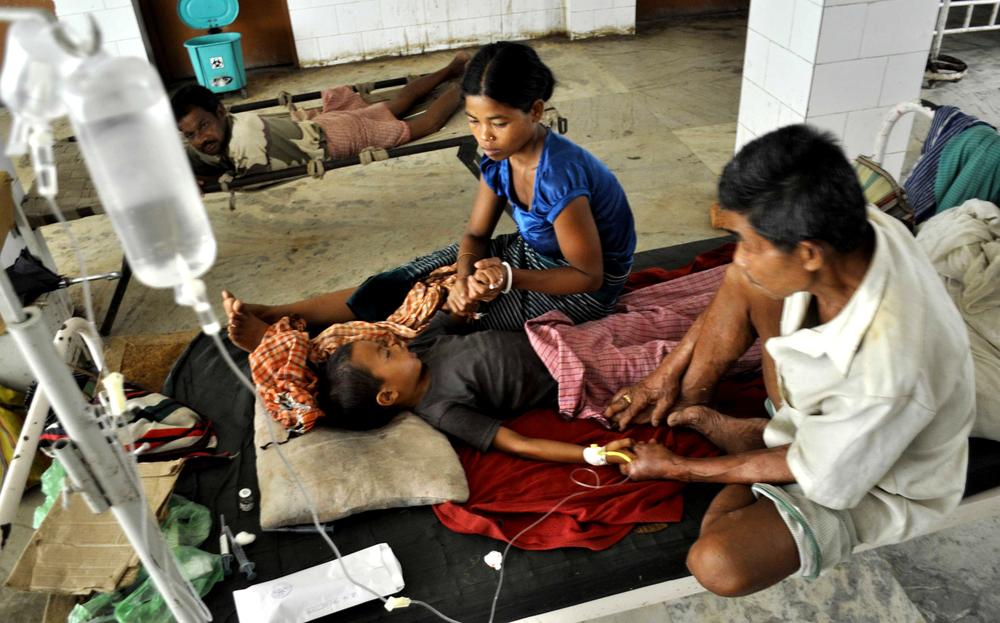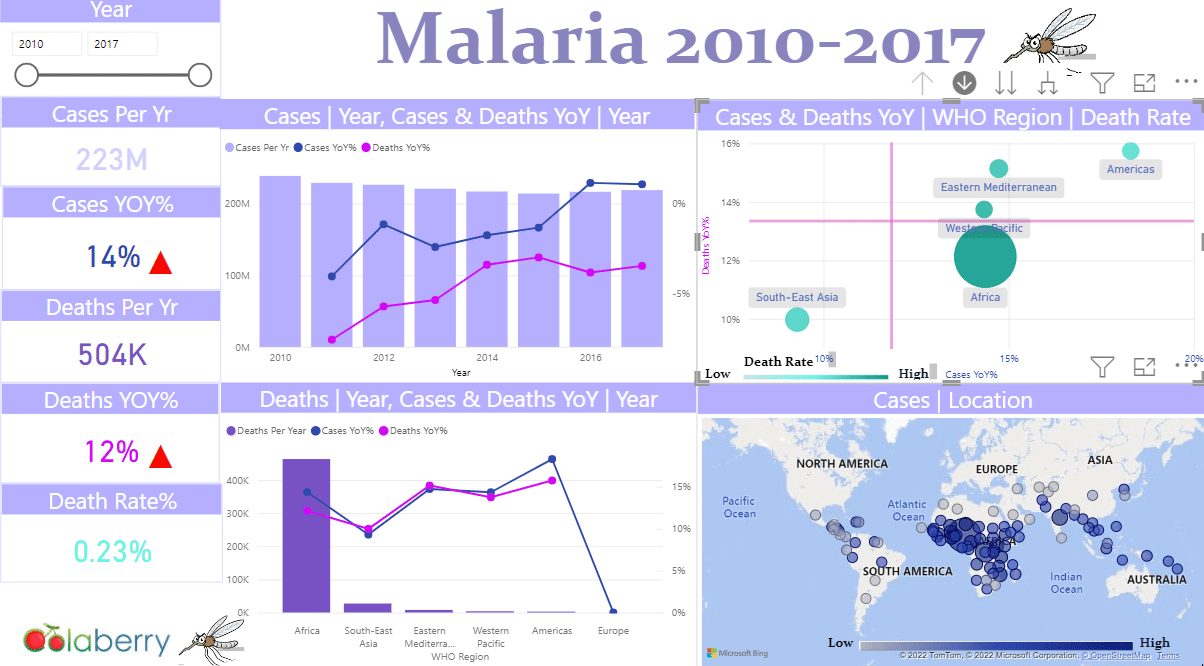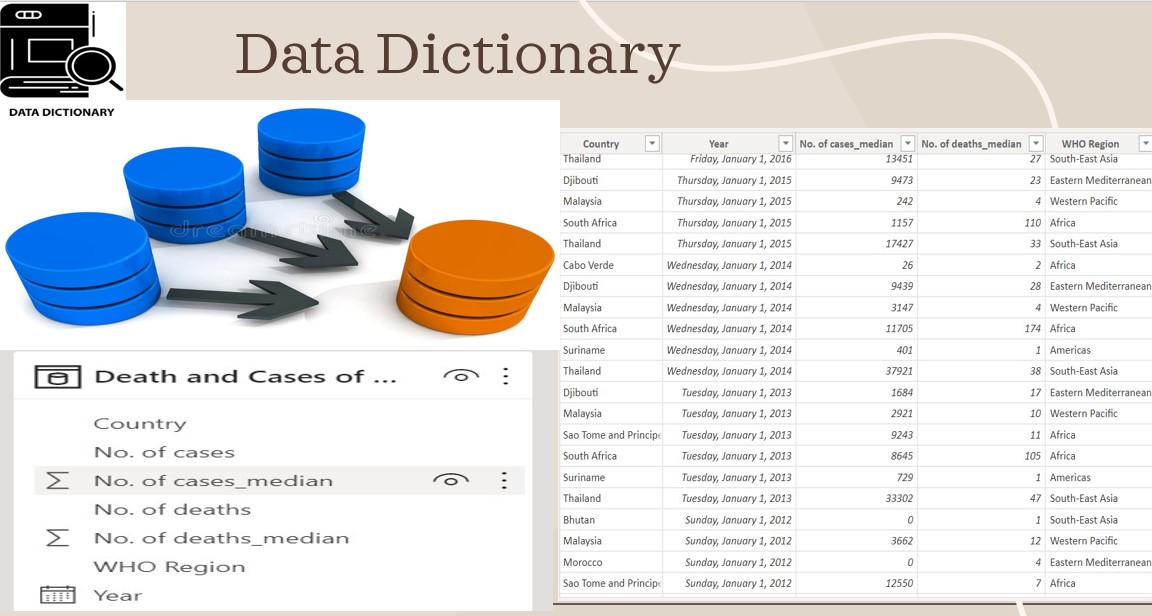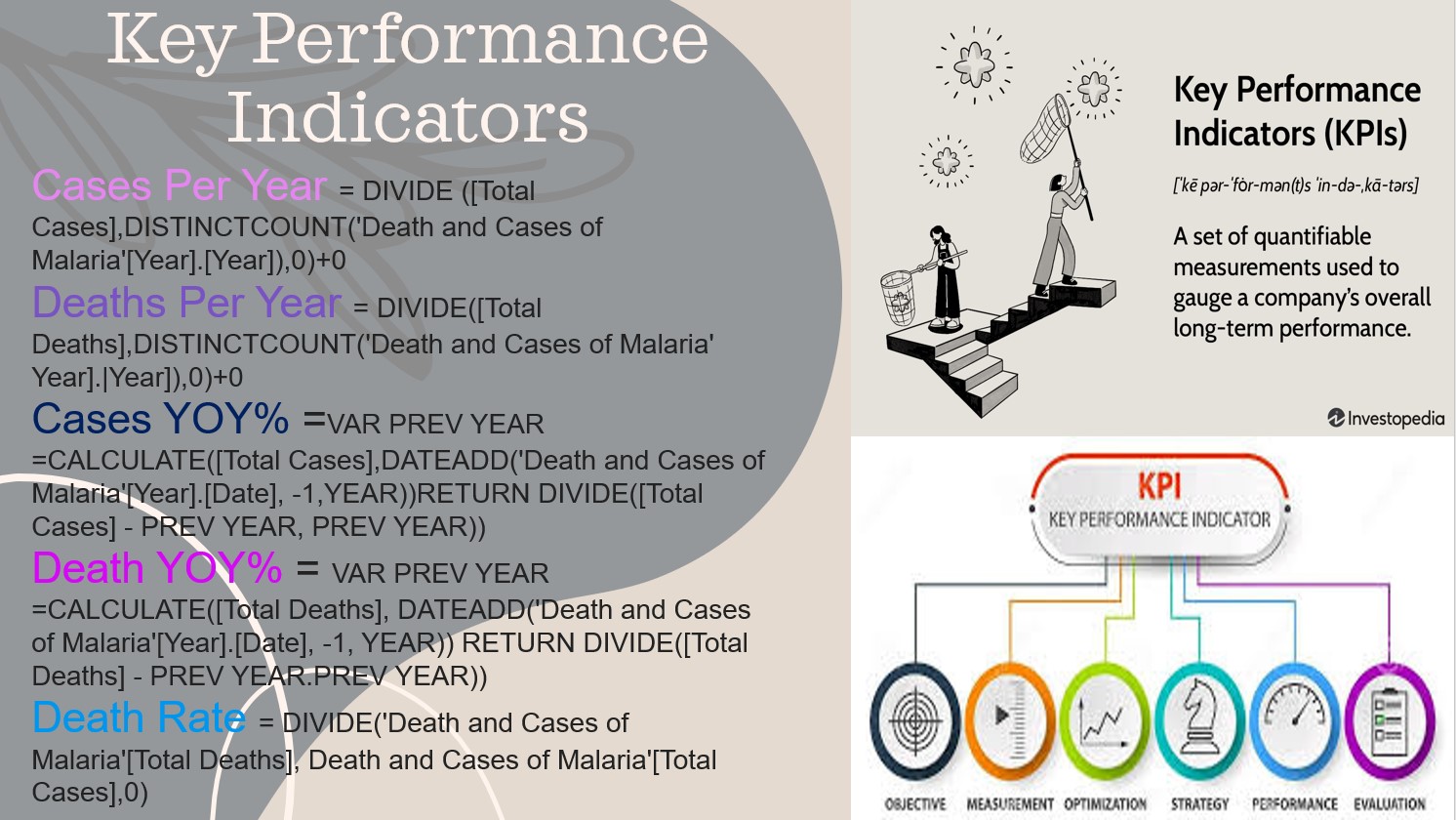Completion Date:
Project Overview
Malaria is a life-threatening disease caused by parasites that are transmitted to people through the bites of mosquitoes. In a majority of the countries who are affected by malaria, malaria is the leading cause of illness and death. The amount of money that has to be paid for direct costs is estimated to be about $12 billion a year and because malaria is mostly prevalent in poverty-stricken areas in the world it is causing the economic growth of these countries to extremely decline. The World Health Organization has created a strategy in hopes for a ninety percent reduction of cases and deaths globally by 2030. This project will be analyzing the deaths and cases of malaria from the years 2010-2017. With this project one will be able to notice whether WHO’s malaria strategy is actually ceasing progress throughout this time frame.
Role:
Problem Statement
Malaria is a disease that spreads rapidly around the world. The World Health Organization is trying to decrease the number of cases and deaths by figuring out different measures of preventative care. From the year 2000 to 2015 malaria cases have decreased by 37% and the mortality rate has decreased by 60% globally. Although we are seeing great numbers on a global scale, we are still dealing with the issue that the decreases in cases and mortality rates are not as effective with countries that have the largest numbers of malaria. In the year 2000, reductions in case incidence were 32% in 15 countries that accounted for 80% of cases globally versus 53% in the rest.
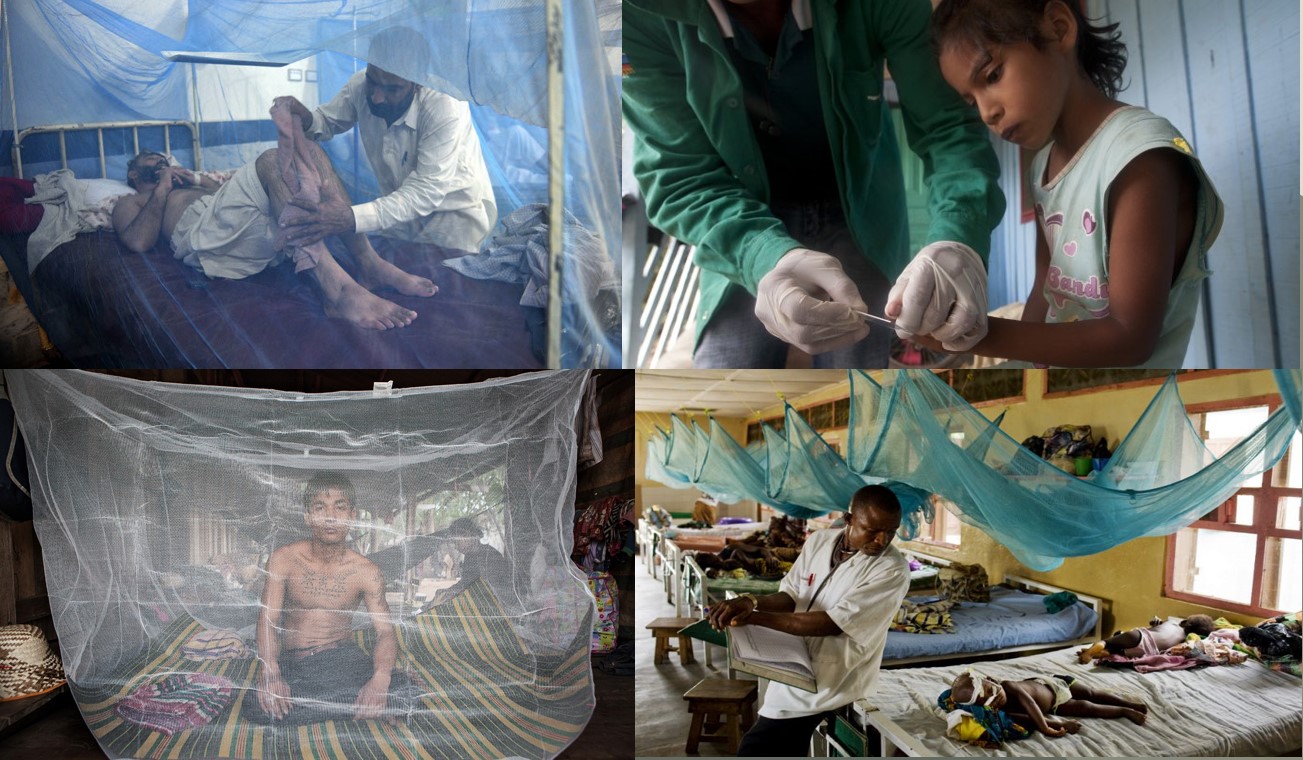
Next Steps
1. The data shows that the WHO region with the highest cases is Africa. On a global scale the data states that there was 223 million cases from 2010-2017 and Africa equated for 198 million of the cases. My suggestion would be to show more medical attention and prevention in these areas.
2. From 2013-2017 the cases yoy % has increased a little bit every year on a global stance. In 2013 the cases yoy% was -2.4% , 2014 -1.7%, 2015 -1.3%, 2016 1.1%, and 2017 1%. The goal is to completely eradicate malaria and although the changes aren\\\\\\\\\\\\\\\'t drastic we found ourselves outside of the negatives and back into the positives. My suggestion is to create more awareness about the atrocities of malaria in places where it\\\\\\\\\\\\\\\'s prevalent. Advertise the importance of malaria nets, staying away from bodies of water, to get vaccinated, etc.
3.Based on the data we can see that certain countries go through sudden changes within a year. For example in the country of Comonos located in South East Africa the cases yoy% was down 30% and the death rate% was down 38% between the years of 2015 and 2016 which is great news but the issue is from 2016-2017 the cases yoy% shot up to 79% and the deaths yoy% increased a whole 100%. With a sudden outrage within one year immediate and increased surveillance is needed. I suggest that data should be collected monthly instead of yearly so that trends can be better evaluated.
4. Infants and children are the most vulnerable to malaria because they\\\\\\\\\\\\\\\'re immune system isn\\\\\\\\\\\\\\\'t strong enough to fight off this disease. The data states that globally there was 219 million cases in 2017. According to the World Health Organization \\\\\\\\\\\\\\\"Young children are the most vulnerable group affected by malaria - they accounted for 61% (266,000) of all malaria deaths worldwide in 2017.\\\\\\\\\\\\\\\" I suggest that it should be normalized for all children to sleep under mosquito tents, dress fully clothed as much as possible, apply natural insecticides in homes, and get regular check ups.
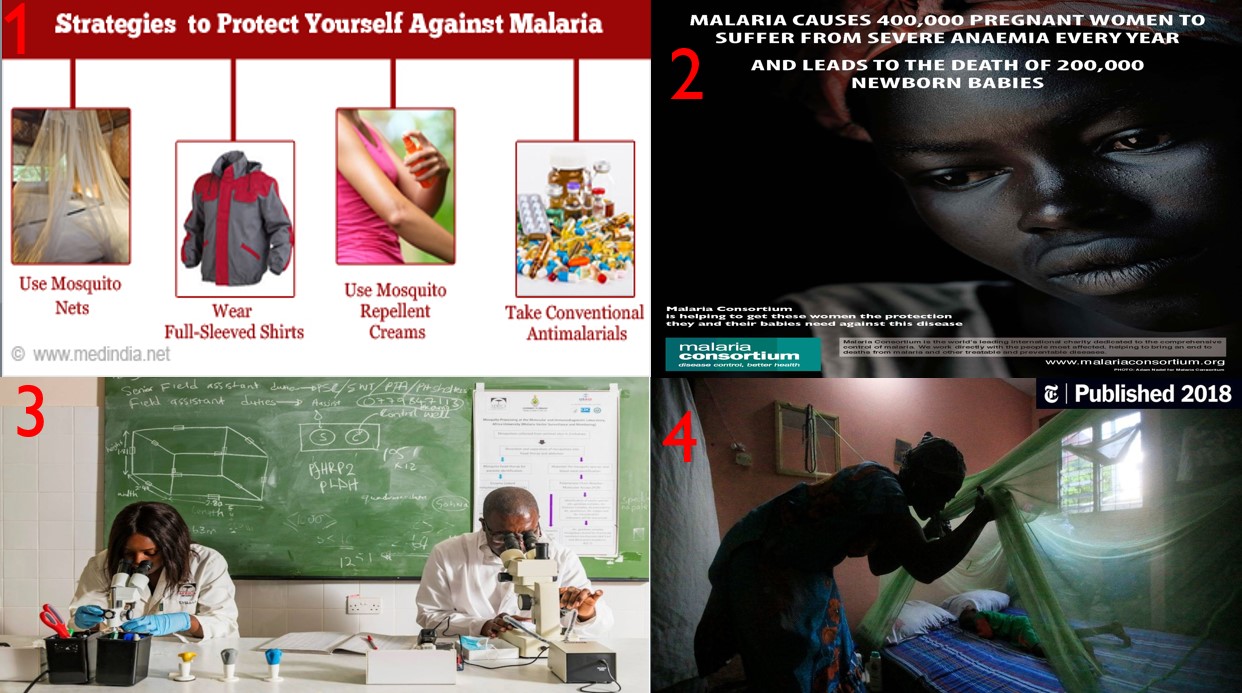
Deployment
